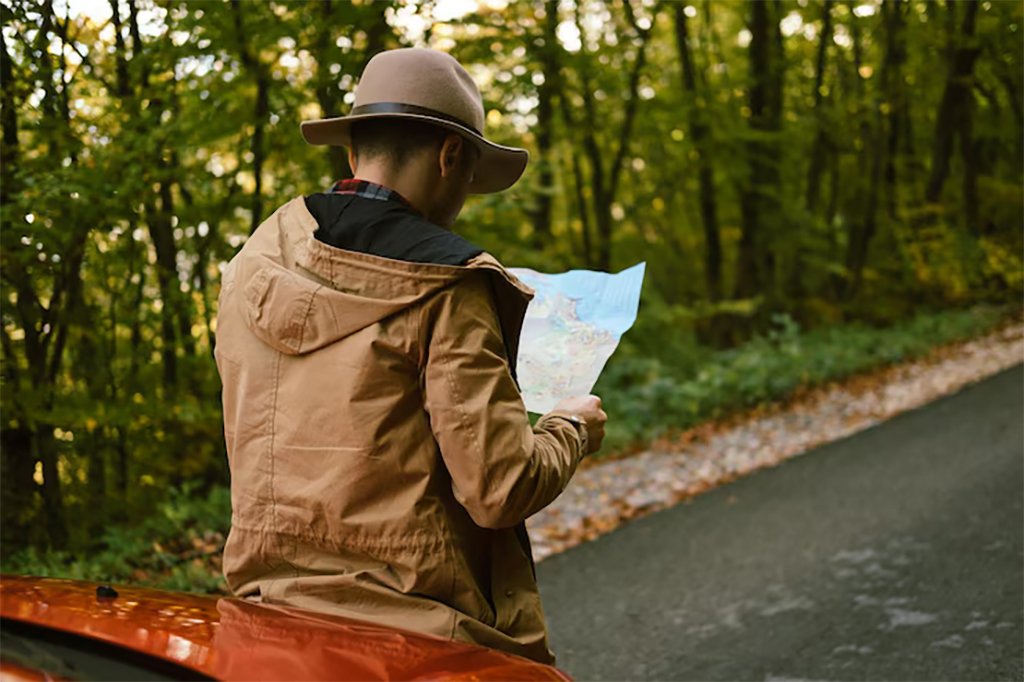Bali, Indonesia—a tropical paradise known for its lush landscapes, vibrant culture, and serene beaches—offers travelers a unique opportunity to explore its beauty at their own pace. While the island’s charm is undeniable, navigating its roads can present challenges, especially for those unfamiliar with local driving customs and infrastructure.
Whether you’re planning a scenic road trip or simply aiming to reach your next destination, understanding how to effectively use maps and navigation tools is crucial. This guide provides seven essential map tips to help you navigate Bali’s roads like a seasoned traveler.
1. Embrace Digital Navigation Tools
In the age of technology, digital navigation tools have become indispensable for travelers. Apps like Google Maps and Waze offer real-time traffic updates, route suggestions, and estimated arrival times. However, it’s important to note that these apps may occasionally direct users onto less-traveled or unpaved roads, especially in rural areas. For instance, tourists have reported being led onto impassable routes in North Bali, highlighting the need for caution and verification when following digital directions.
Pro Tip: Always cross-reference your digital map with a physical map or local advice, especially when traveling to unfamiliar areas.
2. Understand Local Road Conditions
Bali’s road infrastructure varies significantly across the island. While major tourist hubs like Denpasar, Kuta, and Ubud boast well-maintained roads, rural areas may feature narrow, winding paths with potholes or uneven surfaces. Heavy rains can exacerbate these conditions, making roads slippery and challenging to navigate.
Pro Tip: Invest in a detailed physical map that highlights road conditions, elevations, and notable landmarks. This can serve as a valuable backup when digital tools fail.
3. Familiarize Yourself with Local Driving Customs
Driving in Bali can be an adventure in itself. Local driving customs may differ from what you’re accustomed to. For example, honking is a common practice used to signal presence or intentions, not necessarily as an expression of frustration. Additionally, motorbikes often weave through traffic, and pedestrians may cross roads unpredictably.
Pro Tip: Stay alert, drive defensively, and be prepared to yield to local traffic behaviors.
4. Plan Your Routes Wisely
Bali’s traffic congestion can be overwhelming, particularly during peak hours. Rush hour typically occurs between 6:00–8:00 AM and 5:00–7:00 PM. To avoid delays, plan your travel during off-peak times. Utilizing backroads can also provide a scenic and less congested alternative to main highways.
Pro Tip: Use navigation apps to check real-time traffic conditions and adjust your route accordingly.
5. Be Prepared for Unexpected Obstacles
Bali’s roads are often shared with various forms of transportation and wildlife. It’s not uncommon to encounter cows, dogs, or chickens on the road, especially in rural areas. Additionally, religious ceremonies can temporarily block roads, requiring patience and respect.
Pro Tip: Always drive at a safe speed, remain vigilant, and be prepared to stop or maneuver around unexpected obstacles.
6. Utilize Offline Maps for Remote Areas
In remote regions of Bali, mobile network coverage may be limited, rendering digital navigation tools ineffective. In such cases, offline maps can be a lifesaver. Apps like Maps.me allow users to download maps for offline use, ensuring you have access to navigation even without an internet connection.
Pro Tip: Before venturing into remote areas, download offline maps and familiarize yourself with the route.
7. Seek Local Advice
While maps and navigation tools are helpful, there’s no substitute for local knowledge. Engaging with locals can provide insights into current road conditions, the best routes, and potential hazards. Many Balinese are friendly and willing to share their knowledge with visitors.
Pro Tip: Don’t hesitate to ask locals for directions or advice, and always approach interactions with respect and courtesy.
Conclusion
Navigating Bali’s roads requires a combination of preparation, awareness, and adaptability. By embracing digital and physical maps, understanding local driving customs, planning your routes wisely, and being prepared for unexpected obstacles, you can ensure a safe and enjoyable journey through this beautiful island. Remember, the journey itself is part of the adventure—embrace it with an open mind and a spirit of exploration.










Join The Discussion